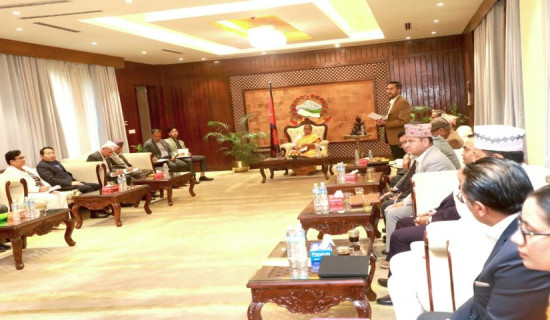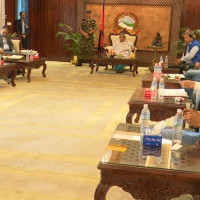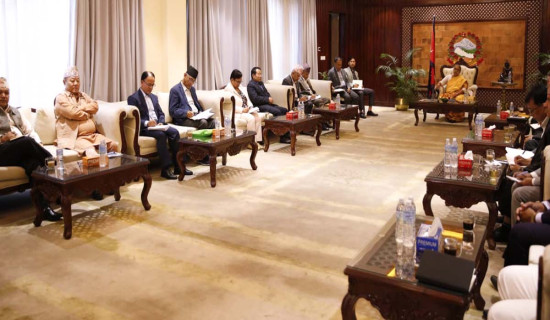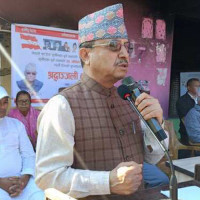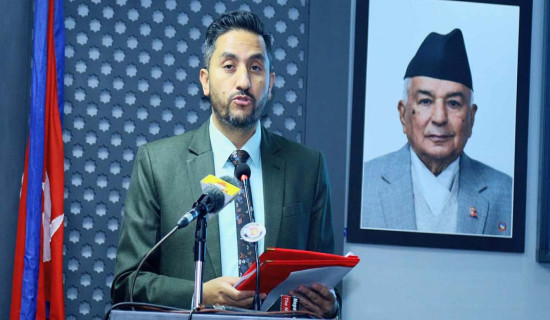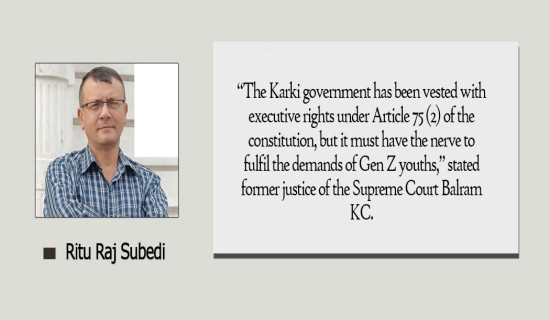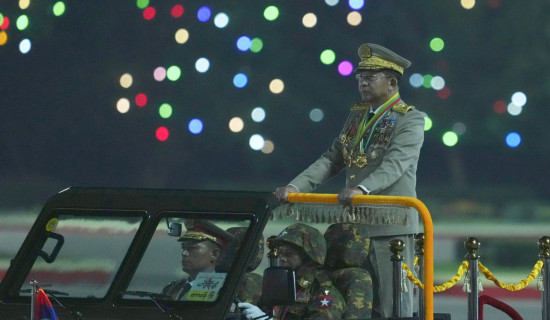- Wednesday, 22 October 2025
Contain Toxic Air
In recent years, air pollution in Nepal has emerged as a major threat to the environment and public health, with pollution levels 4.9 times higher than recommended by the WHO. The deteriorating air quality in Kathmandu is putting many Nepalis at risk of several health problems. Air pollution has reached such a critical level that it now demands immediate policy interventions, technological advancements, and public awareness efforts to safeguard both human lives and the environment.
Nepal is ranked among the most air-polluted countries globally, with Kathmandu, its capital, often topping the lists of the world’s most polluted cities, according to data from IQAir. The WHO has consistently found air pollution to be the leading risk factor for death and disability in Nepal. In 2019, air pollution was linked to approximately 37,399 premature deaths in Nepal, with Kathmandu accounting for 9,943 of the fatalities. Inhalation of pollutants like PM2.5 can lead to chronic respiratory diseases and cardiovascular conditions. Those most at risk are young children, the elderly, and pregnant mothers.
Nepal’s geographical features elevate its already high pollution readings. It is situated between India and China, two economic powerhouses, which are also the world’s top contributors to air pollution. The rapid urbanisation, increased vehicular emissions, and industrial activities have significantly deteriorated air quality. Current pollution in the country is due to incidents of fire caused by high temperatures, dry vegetation, and people’s act of discarding cigarette butts, open burning etc.
Air pollution also has a significant impact on economic and social areas, affecting productivity, increasing healthcare costs, and hindering tourism. As tourism is a vital contributor to Nepal’s economy, it has been affected as international travellers often avoid Kathmandu due to its pollution. Schools have been forced to shut down multiple times due to unsafe outdoor conditions, hampering children's education. Air purifiers, better public transportation, green urban planning, and technological advancements play a vital role in improving air quality. Because of the dangerous air quality, outdoor labourers, including traffic police, street vendors, and daily wage workers, suffer from long-term health effects, reducing their work efficiency.
The escalating air pollution demands immediate and consistent action. Implementing targeted policies, promoting public awareness, and investing in cleaner technologies can help mitigate the crisis. The government must prioritise promoting electric vehicles, enhancing waste management, and increasing open spaces or parks in urban areas. Afforestation programmes, stricter industrial regulations and improved public transportation are mandatory for the long-term solution. Nepal can attempt to protect the health of people and the environment to ensure a sustainable environment for future generations.
"The greatest threat to our planet is the belief that someone else will save it," said a British explorer, Robert Swan. While government policies and organisations play a role in tackling the issue, citizens also hold a crucial responsibility in mitigating air pollution. It requires collective efforts from both the government and citizens to minimise the pollution. While people remain negligent about their role in protecting the environment, raising awareness and adopting responsible habits contribute to making a difference.
The fight against air pollution starts with individual responsibility, and every small effort, such as supporting eco-friendly policies and planting trees, is crucial for a healthier future. If no immediate action is taken, our country could face long-term environmental degradation, severe health crises, and economic declines, making it even harder to battle against this growing emergency.



